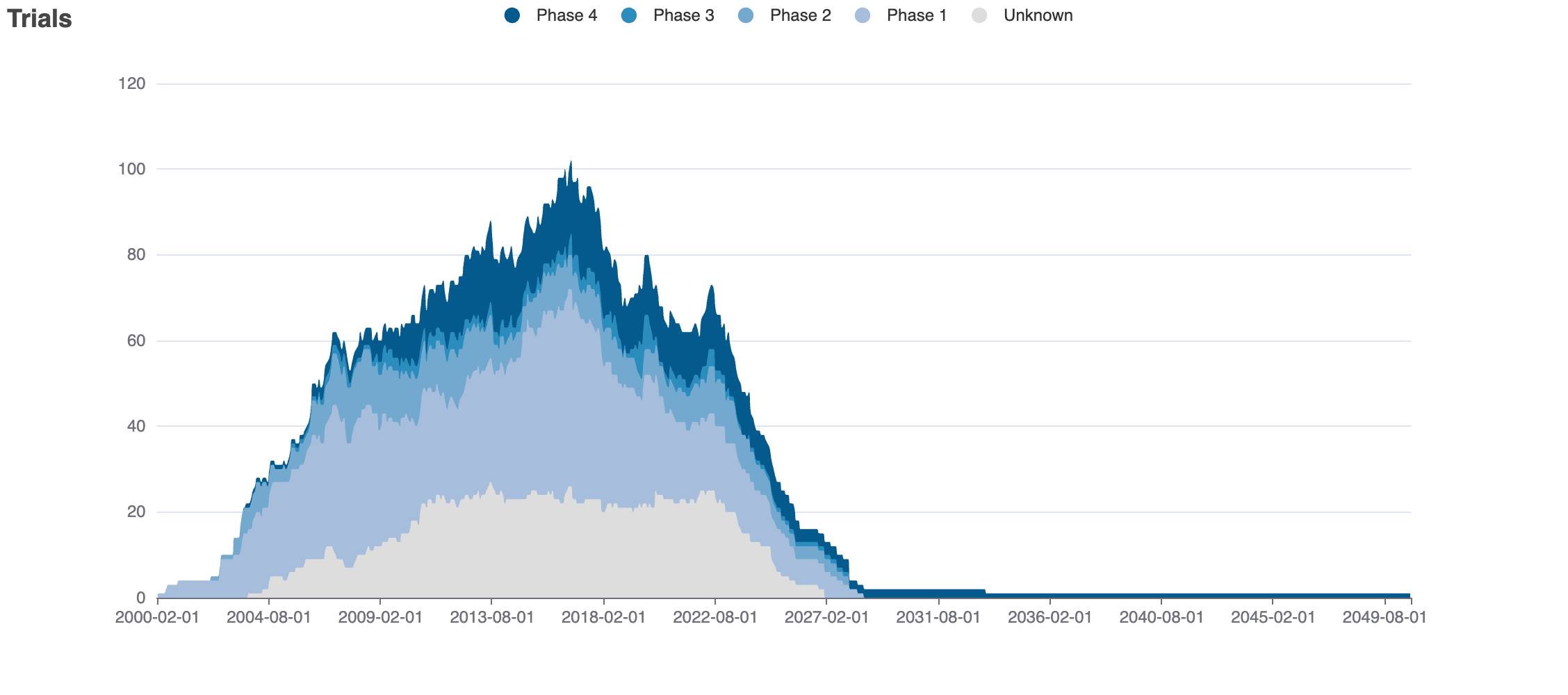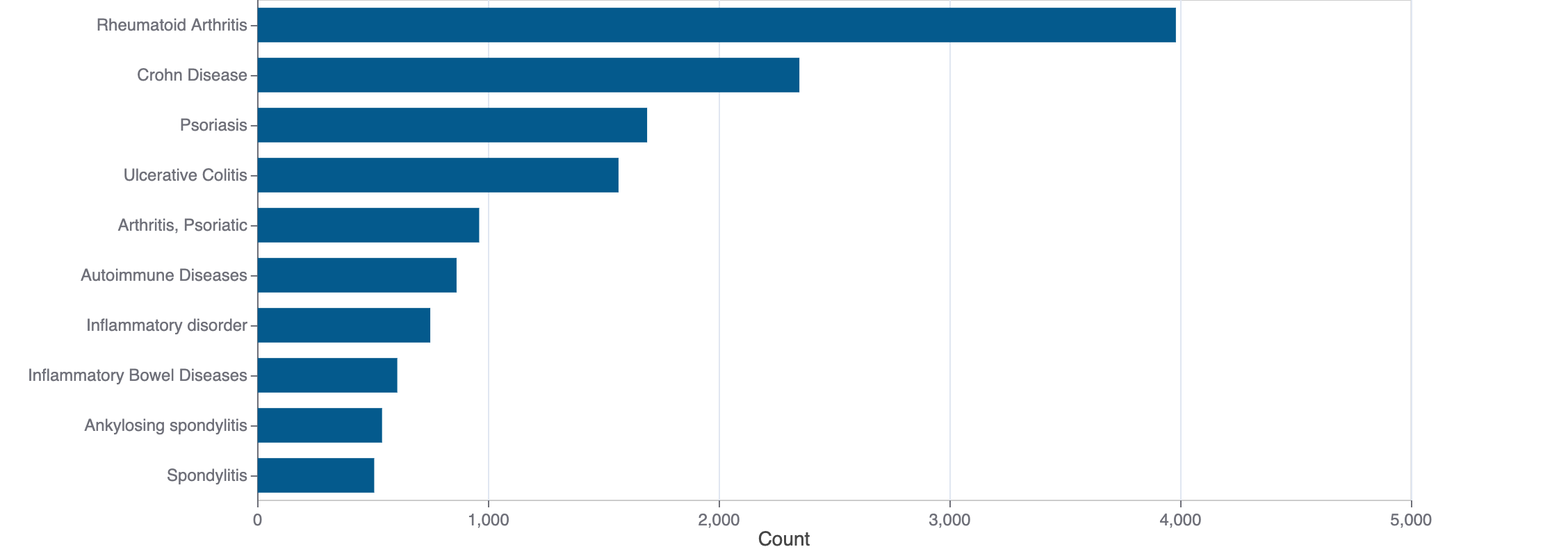Azeliragon
Azeliragon is a small molecule pharmaceutical. It is currently being investigated in clinical studies. The pharmaceutical is active against advanced glycosylation end product-specific receptor.
Download report
Favorite
Commercial
Therapeutic Areas
No data
Trade Name
FDA
EMA
No data
Drug Products
FDA
EMA
New Drug Application (NDA)
New Drug Application (NDA)
Abbreviated New Drug Application (ANDA)
Abbreviated New Drug Application (ANDA)
No data
Labels
FDA
EMA
No data
Indications
FDA
EMA
No data
Agency Specific
FDA
EMA
No data
Patent Expiration
No data
ATC Codes
No data
HCPCS
No data
Clinical
Clinical Trials
12 clinical trials
View more details

Mock data
Subscribe for the real data
Subscribe for the real data
Indications Phases 4
No data
Indications Phases 3
Indication | MeSH | Ontology | ICD-10 | Ph 1 | Ph 2 | Ph 3 | Ph 4 | Other | Total |
|---|---|---|---|---|---|---|---|---|---|
| Alzheimer disease | D000544 | EFO_0000249 | F03 | — | 3 | 2 | — | — | 5 |
Indications Phases 2
Indication | MeSH | Ontology | ICD-10 | Ph 1 | Ph 2 | Ph 3 | Ph 4 | Other | Total |
|---|---|---|---|---|---|---|---|---|---|
| Diabetic nephropathies | D003928 | EFO_0000401 | — | 1 | — | — | — | 1 | |
| Neoplasms | D009369 | C80 | 1 | 1 | — | — | — | 1 | |
| Glioblastoma | D005909 | EFO_0000515 | 1 | 1 | — | — | — | 1 |
Indications Phases 1
No data
Indications Without Phase
No data
Epidemiology
Epidemiological information for investigational and approved indications
View more details
Drug
General
| Drug common name | AZELIRAGON |
| INN | azeliragon |
| Description | RAGE (receptor for advanced glycation endproducts), also called AGER, is a 35 kilodalton transmembrane receptor of the immunoglobulin super family which was first characterized in 1992 by Neeper et al. Its name comes from its ability to bind advanced glycation endproducts (AGE), which include chiefly glycoproteins, the glycans of which have been modified non-enzymatically through the Maillard reaction. In view of its inflammatory function in innate immunity and its ability to detect a class of ligands through a common structural motif, RAGE is often referred to as a pattern recognition receptor. RAGE also has at least one other agonistic ligand: high mobility group protein B1 (HMGB1). HMGB1 is an intracellular DNA-binding protein important in chromatin remodeling which can be released by necrotic cells passively, and by active secretion from macrophages, natural killer cells, and dendritic cells.
|
| Classification | Small molecule |
| Drug class | receptor for advanced glycation endproducts (RAGE) inhibitors |
| Image (chem structure or protein) | |
| Structure (InChI/SMILES or Protein Sequence) | CCCCc1nc(-c2ccc(OCCCN(CC)CC)cc2)cn1-c1ccc(Oc2ccc(Cl)cc2)cc1 |
Identifiers
| PDB | — |
| CAS-ID | 1421852-66-5 |
| RxCUI | — |
| ChEMBL ID | CHEMBL3989929 |
| ChEBI ID | — |
| PubChem CID | — |
| DrugBank | — |
| UNII ID | LPU25F15UQ (ChemIDplus, GSRS) |
Target
Agency Approved
AGER
AGER
Organism
Homo sapiens
Gene name
AGER
Gene synonyms
RAGE
NCBI Gene ID
Protein name
advanced glycosylation end product-specific receptor
Protein synonyms
receptor for advanced glycation end-products, Receptor for advanced glycosylation end products
Uniprot ID
Mouse ortholog
Ager (11596)
advanced glycosylation end product-specific receptor (Q62151)
Alternate
No data
Variants
Clinical Variant
No data
Financial
No data
Trends
PubMed Central
Top Terms for Disease or Syndrome:

Mock data
Subscribe for the real data
Subscribe for the real data
Additional graphs summarizing 158 documents
View more details
Safety
Black-box Warning
No Black-box warning
Adverse Events
Top Adverse Reactions
0 adverse events reported
View more details
Premium feature
Learn more about premium features at pharmakb.com
Learn more
